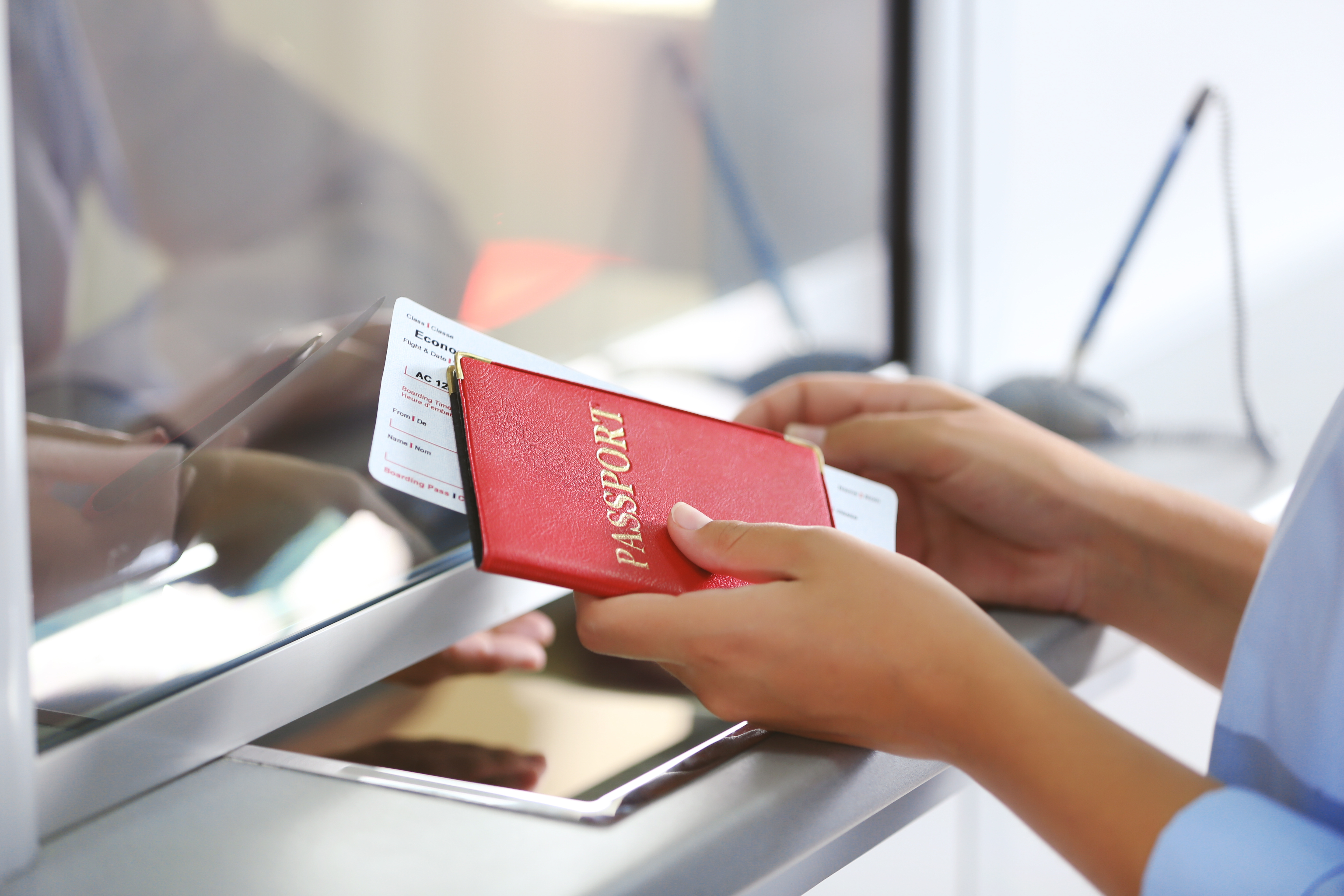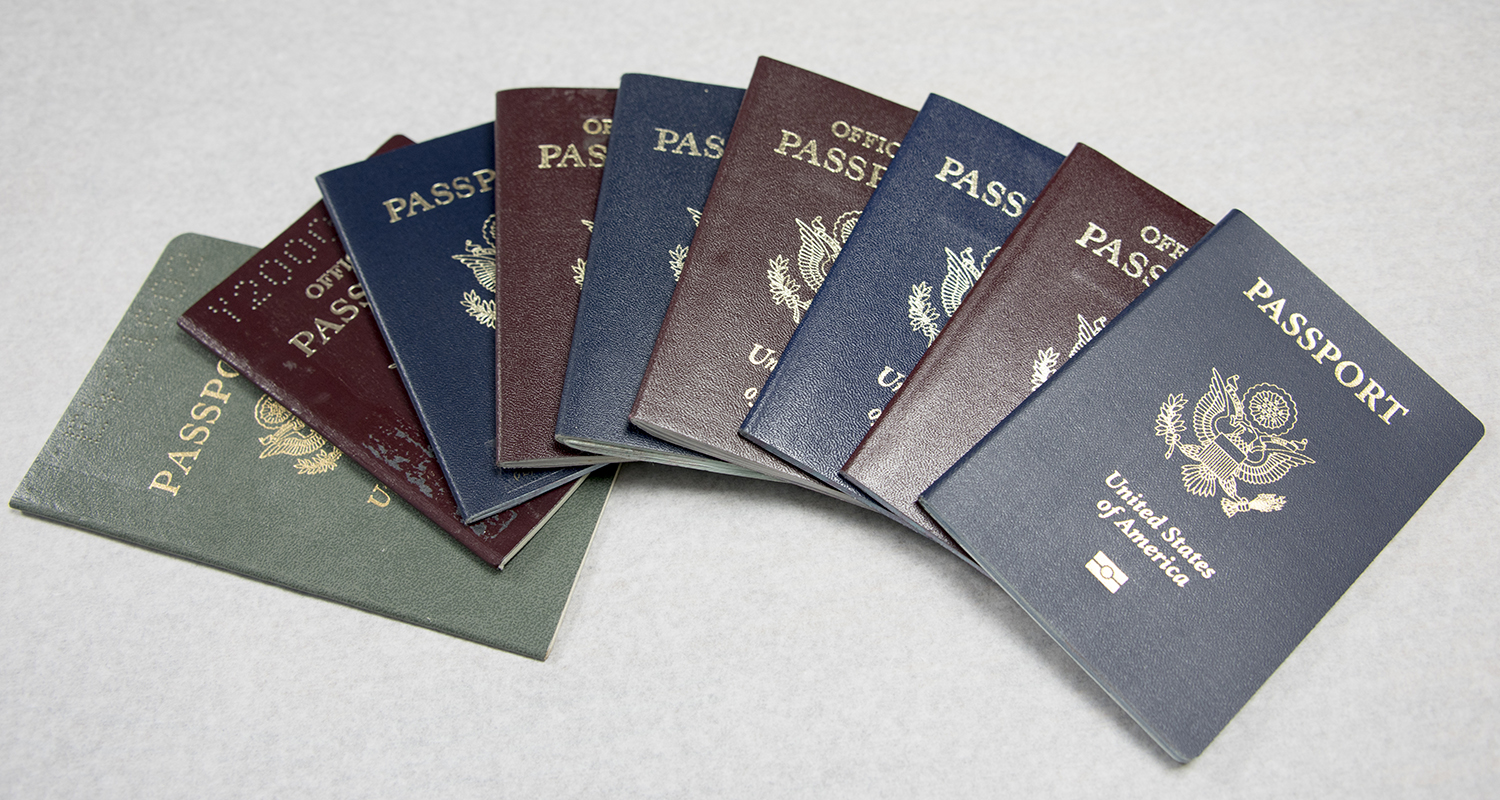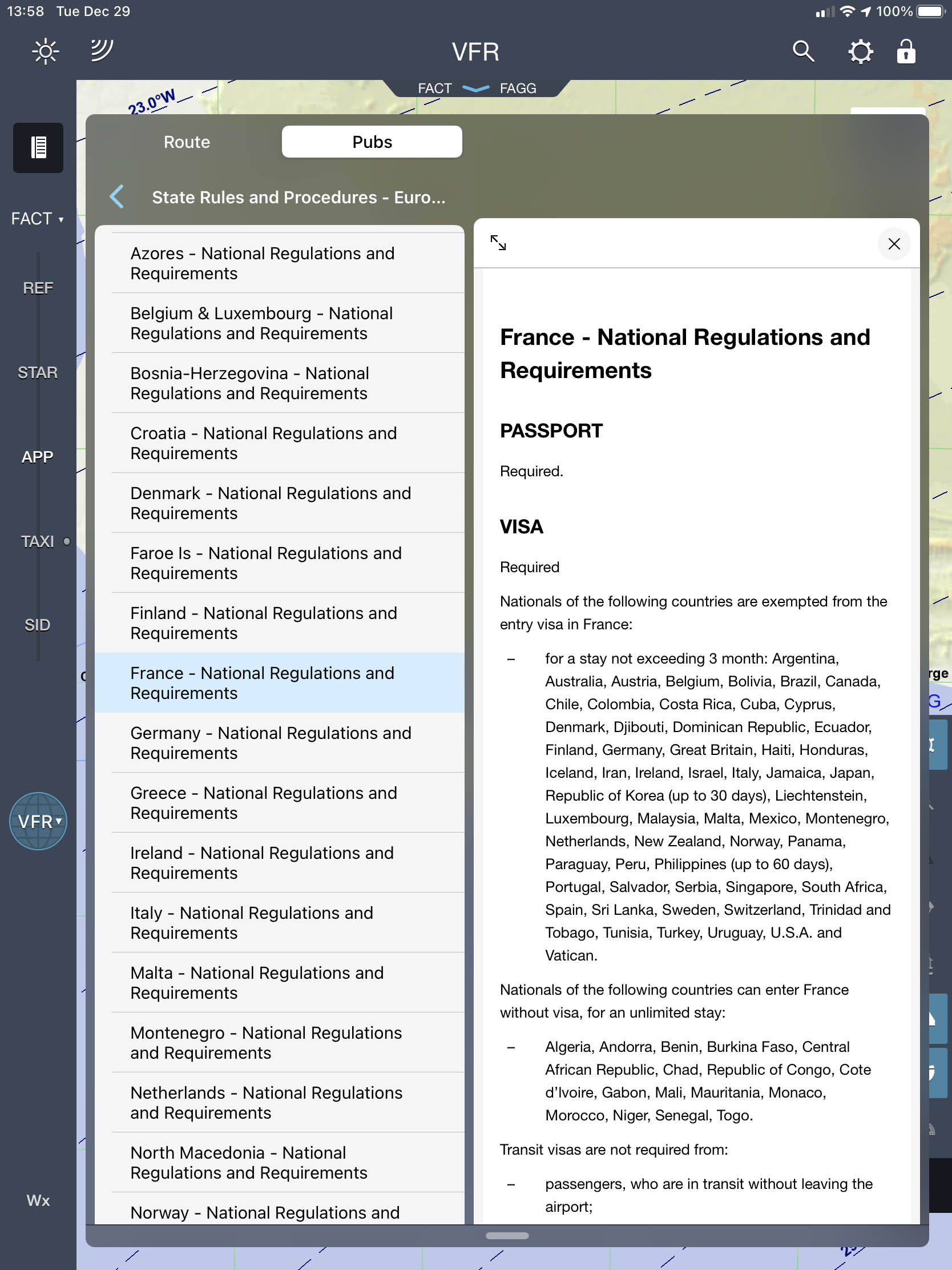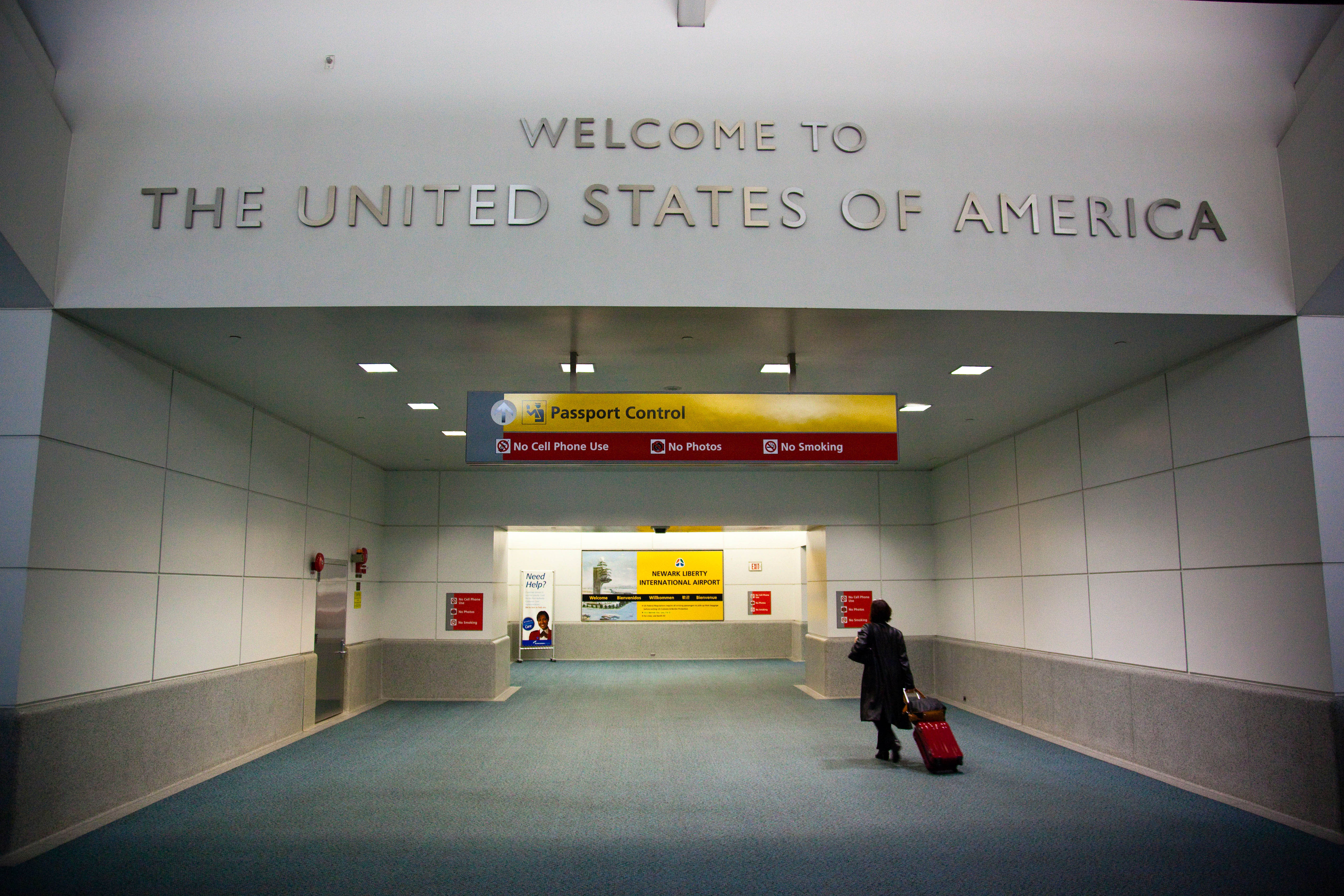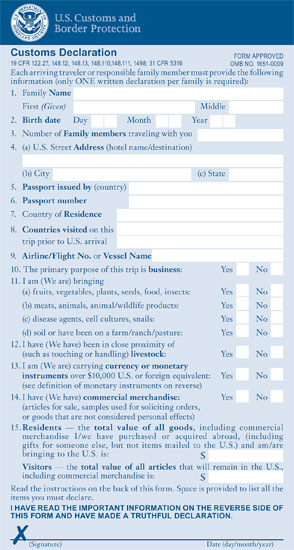There are three very good rules when it comes to dealing with the customs officials of another country if you want to make things go smoothly (and avoid jail time.)
— James Albright

Updated:
2020-12-29
- Not all the rules are written and even if they are they are subject to change; it pays to know somebody with first-hand experience with the country.
- Sometimes things don't go well and having an advocate on the ground who speaks the language and actually lives there will work in your favor. If you don't have somebody like that, find a trip planning handler who does.
- Be prepared for delays, don't get upset in public, and make sure your passengers know to do the same. You are playing in someone else's sandbox and they can toss you into the penalty box for no reason at all. Don't give them the excuse to do just that.
In fact, these rules also apply to dealing with the customs officials of your own country too. In the case of the United States, it is often difficult to find the information you need because the rules are always changing and links to their needed spots on their websites seldom stay put for more than a year. The best you can do is to do your best, answer their questions honestly, and don't get upset.
You will have to be well versed in Customs, Immigration, and Quarantine (CIQ).
As with many things in international travel, your best source is the host nation's Aeronautical Information Publication (AIP). You might find everything you need in the "State Pages" of your Jeppesen JeppFD application, provided you have the correct subscriptions. Having a handler with "boots on the ground" — local personnel well versed in the country's policies, can be invaluable.

1
Before departing the U.S.
Passports and Visas
You will probably need a passport to enter another country and then to return to United States. The rules are different for each country and can also change depending on the other countries on your itinerary. The rules of Visas can also be different for passengers and crewmembers. You may be surprised to hear that many countries even have rules on how many blank pages must be available in your passport or how many months remain before expiration.
The best way to be certain is to visit: https://travel.state.gov/content/travel/en/passports.html and use the "Learn about your destination" section.
Visa Waiver Program, "Green Cards"
A person who enters the United States under the Visa Waiver Program may not be aware that they cannot depart the country unless the entity providing the transportation is approved under the program. Even as a 14 CFR 91 operator you can be an approved Visa Waiver Program carrier, but even if you aren't and one of your passengers is traveling using the Visa Waiver Program, you need to be smart about it.
More about this: Visa Waiver Program.
Minors Traveling Without Their Parents
Some countries required minors traveling without their parents have notarized travel permission from their legal guardians.
Canada
Getting into and out of Canada is fairly easy and it can be even easier if you, everyone on your crew, and all your passengers are enrolled in CANPASS. See: CANPASS.
Electronic Advanced Passenger Information System (eAPIS)
You've got no choice in the matter anymore, you have to participate in the Electronic Advanced Passenger Information System (eAPIS). An international flight planning service can make this easy for you, but you can do it yourself. The system the Department of Homeland Security (DHS) gives you through Customs & Border Protection (CBP) is fair, at best, but it does work. It won't remember your passengers or crew, but it remembers you. Several flight planning services that you are probably already using can automate things and make the entire process a bit less painful. More about this: eAPIS.
2
Entering and departing other countries
Best Source: Aeronautical Information Publication (AIP)
Each nation's AIP should have a similar format, though often they do not. If you are a visitor to the United States, you can find our AIP here: https://www.faa.gov/air_traffic/publications/. What you are looking for should be in PART 1 - General (GEN). GEN 1.3 tells you what you need to know for customs requirements, passports, visas, manifests, and public health quarantine rules. This is where you should begin your search in any country's AIP.
Another Good Source: Jeppesen JeppFD
Provided you have the subscriptions required for the region you are interested in, Jeppesen offers most of what you need in their so-called "State Pages." A few pointers for JeppFD:
- You need to download the manuals you are interested in, they don't do this automatically. In JeppFD you will need to selected the gear icon from the main screen, select "Updates" and then the right arrow next to "Manuals." I recommend you always select "General" and your home region, as well as any you expect to travel through.
- Make sure your screen is on a chart by pressing the icon that reads "High IFR," "Low IFR," or "VFR." (You need to do this for the next step.)
- Select the book icon on the top left of the screen.
- If the pull out menu shows "Route" highlighted with route information below it, select "Pubs" instead. You should now see the regions you have access to.
- After you select the desired region, you should get a selection of "Enroute Change Notices," the region-specific manual, such as "Europe Airway Manual," and the "General Airway Manual." Select your desired region.
- The next set of menus should include "Entry Requirements" where you will find your CIQ requirements.
3
Entry into the U.S.
The process of getting back into the country has gotten easier, thanks to the proliferation of electrons in the system. Things will go more smoothly if you have eAPIS complete, have your paperwork in order, and be patient with the guy wearing the badge and gun.
Airport of Entry (AOE)
As a seasoned international pilot, you know your first point of arrival needs to be a qualified airport of entry. You may have understandably assumed that any airport with the word “international” is so designated. But that isn’t true in the U.S. There are only 58 qualified airports so designated by Title 19 of the Code of Federal Regulations, Section 122.13.
Chances are you will be using a “landing rights” airport. The distinction is somewhat minor except that you need permission to land at a landing rights airport. That permission comes from the appropriate customs officer with acknowledgment of the Immigration and Naturalization Service, the Public Health Service, and the Animal and Plant Health Inspection Service of the Agriculture Department. You secure that permission following transmission of an electronic data interchange system known as the Electronic Advance Passenger Information System, or eAPIS.
Electronic Advanced Passenger Information System (eAPIS)
You can't depart for the United States unless you have your eAPIS in order. More about this: eAPIS.
Southern Border Overflight Exemption (SBOE)
Private aircraft arriving from certain areas south of the U.S. must also furnish a notice of intended arrival to the Customs service at the nearest designated airport to the point of first border or coastline crossing. They must then land at this airport for inspection, unless they have an “SBOE,” or Southern Border Overflight Exemption. The arrival areas include:
(a) The U.S./Mexican border or the Pacific Coast from a foreign place in the Western Hemisphere south of 33 deg. north latitude.
(b) The Gulf of Mexico and Atlantic Coasts from a foreign place in the Western Hemisphere south of 30 deg. north latitude, from any place in Mexico, or from the U.S. Virgin Islands.
The requirement to land, the details in the notice to Customs, and the process to obtain an exemption is covered in the U.S. AIP, Section GEN 1.2, Paragraph 4. The list of designated airports is given in Paragraph 5. Further restrictions for flight to and from Cuba are given in Paragraph 7.
More about this: Southern Border Overflight Exemption (SBOE).
Immigration
Once you’ve found a suitable airport to enter the U.S. and have approval to do that, the next step is often called “CIQ,” customs, immigration and quarantine. Perhaps ICQ would be better, because you cannot understand the CQ without covering the “I” first.
The “I” of CIQ is immigration and governs the people you attempt to bring into or out of the country. Section GEN 1.3 of the U.S. AIP makes it clear that a valid passport is always required and that a visa is almost always required, but it leaves you guessing about some of the details of those requirements. Fortunately, the U.S. Customs and Border Protection (USCBP) website provides an excellent guide, called the “Carrier Information Guide: United States Documentary Requirements for Travel.” You can download the guide at: https://www. cbp.gov/document/guides/carrier-information-guide-english.
The guide notes that passports must be valid for the duration of the stay, but for a few countries an additional six months of validity is needed. It also states that a visa is required except for some exempted visitors, including those enrolled in the Visa Waiver Program (VWP).
Visa Waiver Program
The Visa Waiver Program (VWP). This program allows citizens of 38 countries to bypass the need for a visa when traveling on a signatory car rier after having been approved by the Electronic System for Travel Authorization (ESTA).
More about this: Visa Waiver Program (VWP).
Non-immigrant Visitors (CBP Form I-94, Arrival/Departure Record)
Foreign visitors to the U.S. arriving via air or sea no longer need to complete paper Customs and Border Protection Form I-94 Arrival/Departure Record or Form I-94W Nonimmigrant Visa Waiver Arrival/Departure Record. Those who need to prove their legal-visitor status—to employers, schools/universities or government agencies—can access their CBP arrival/departure record information online. More about this: http://www.cbp.gov/travel/international-visitors/i-94-instructions.
Customs
Once you’ve ensured immigration concerns are met (the “I”), you can next turn to Customs (the “C”). While immigration concerns who enters the country, Customs concerns what they bring with them. The U.S. AIP makes it clear that all incoming passengers are required to complete a Customs declaration, but it provides little help on how to do this. The USCBP does provide an example CBP Declaration Form 6059B with instructions online at https://www.cbp.gov/travel/clearing-cbp/traveler-entry-form.
Customs Declaration Form 6059B
- Each individual arriving into the United States must complete the CBP Declaration Form 6059B. If you are traveling with other immediate family members who reside in one household, complete one form per family.
- A family is considered people who are related by blood, marriage, domestic relationship or adoption. People in a domestic relationship include foster children, stepchildren, half-siblings, legal wards, other dependents or individuals with an in loco parentis or guardianship relationship. It also includes two adults who are in a committed relationship including, but not limited to, long-time companions and couples in civil unions or domestic partnerships, wherein the partners are financially interdependent and are not married to, or a partner of, anyone else. A "domestic relationship" does not extend to roommates or other cohabitants who do not meet this definition.
Source: http://www.cbp.gov/travel/clearing-cbp/traveler-entry-form
- Print your last (family) name. Print your first (given) name. Print the first letter of your middle name.
- Print your date of birth in the appropriate day/month/year boxes.
- Print the number of family members traveling with you (do not include yourself).
- Print your current street address in the United States. If you are staying at a hotel, include the hotel's name and street address. Print the city and the state in the appropriate boxes.
- Print the name of the country that issued your passport.
- Print your passport number.
- Print the name of the country where you currently live.
- Print the name of the country(ies) that you visited on your trip prior to arriving to the United States.
- If traveling by airline, print the airline's name and flight number. If traveling by vessel (ship), print the vessel's name.
- Mark an X in the Yes or No box. Are you traveling on a business (work-related) trip?
- Mark an X in the Yes or No box. Are you bringing with you:
- fruits, plants, food, or insects?
- meats, animals, or animal/wildlife products?
- disease agents, cell cultures, or snails?
- soil or have you visited a farm/ranch/pasture outside the United States?
- Mark an X in the Yes or No box. Have you or any family members traveling with you been in close proximity of (such as touching or handling) livestock outside the United States?
- Mark an X in the Yes or No box. Are you or any family members traveling with you bringing $10,000 or more in U.S. dollars or foreign equivalent in any form into the United States?
- Mark an X in the Yes or No box. Are you or any family members traveling with you bringing commercial merchandise into the United States?
- If you are a U.S. resident, print the total value of all goods (including commercial merchandise) you or any family members traveling with you have purchased or acquired abroad (including gifts for someone else, but not items mailed to the United States) and are bringing into the United States. Note: U.S. residents are normally entitled to a duty-free exemption of $800 on items accompanying them.
If you are a visitor (non-U.S. Resident), print the total value of all goods (including commercial merchandise) you or any family members traveling with you are bringing into the United States and will remain in the United States. Note: Visitors (non-U.S. Residents) are normally entitled to an exemption of $100.
Declare all articles on this form. For gifts, please indicate the retail value. Use the reverse side of this form if additional space is needed to list the items you will declare.
The U.S. Customs officer will determine duty. Duty will be assessed at the current rate on the first $1,000 above the exemption.
Read the notice on the reverse side of the form.
Sign the form and print the date.
Keep the complete form with you and hand it to the CBP inspector when you approach the Customs and Border Protection area.
Quarantine
The question of what you can bring into the country is closely related to what you are prohibited from bringing, which leads us to the “Q” of CIQ. A quick read of the U.S. AIP leads you to believe you cannot bring any meat or meat products, and that you will need permits to bring in most fruits and vegetables. But there are lots of exceptions and there are also lots of additional prohibitions.
More about this: Agriculture Import.
References
(Source material)
14 CFR 61, Title 14: Aeronautics and Space, Certification: Pilots, Flight Instructors, and Ground Instructors, Federal Aviation Administration, Department of Transportation
http://www.cbp.gov/travel/clearing-cbp/traveler-entry-form
